Answered step by step
Verified Expert Solution
Question
1 Approved Answer
Provide a brief summary what was understood on the aspect of the causes or effects of segregation in city ( any kind of city within
Provide a brief summary what was understood on the aspect of the causes or effects of segregation in city ( any kind of city within US).
REFERENCE:
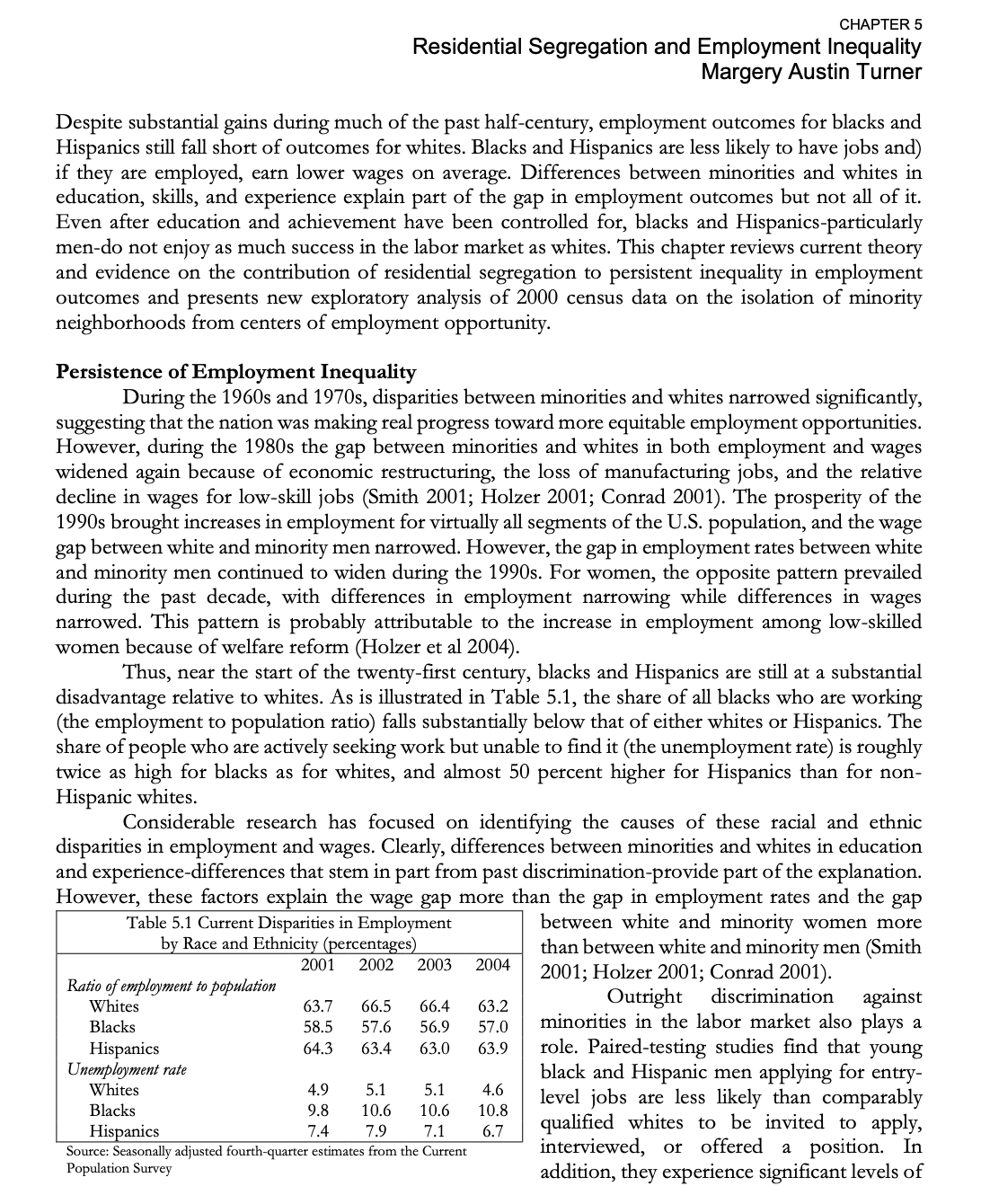
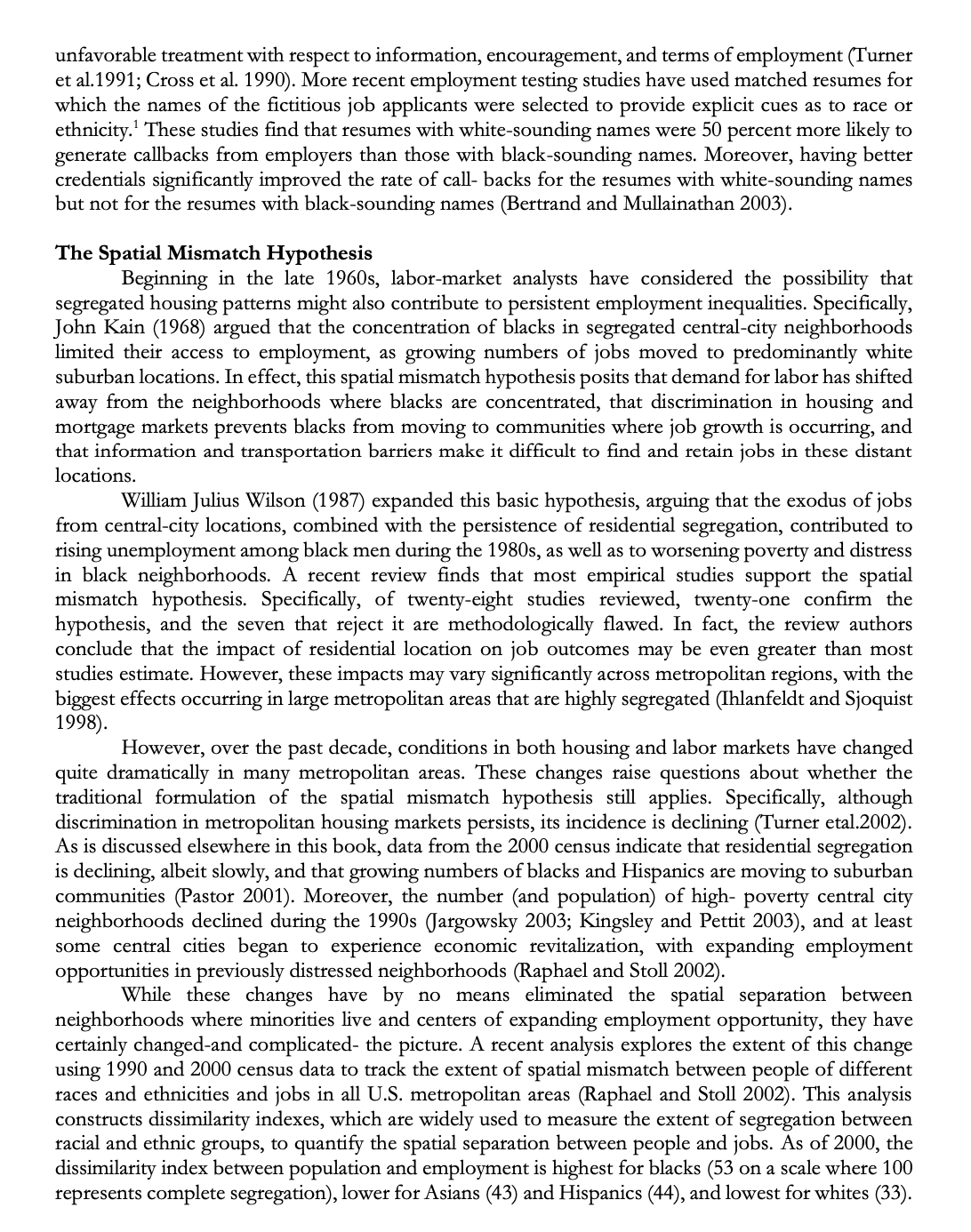
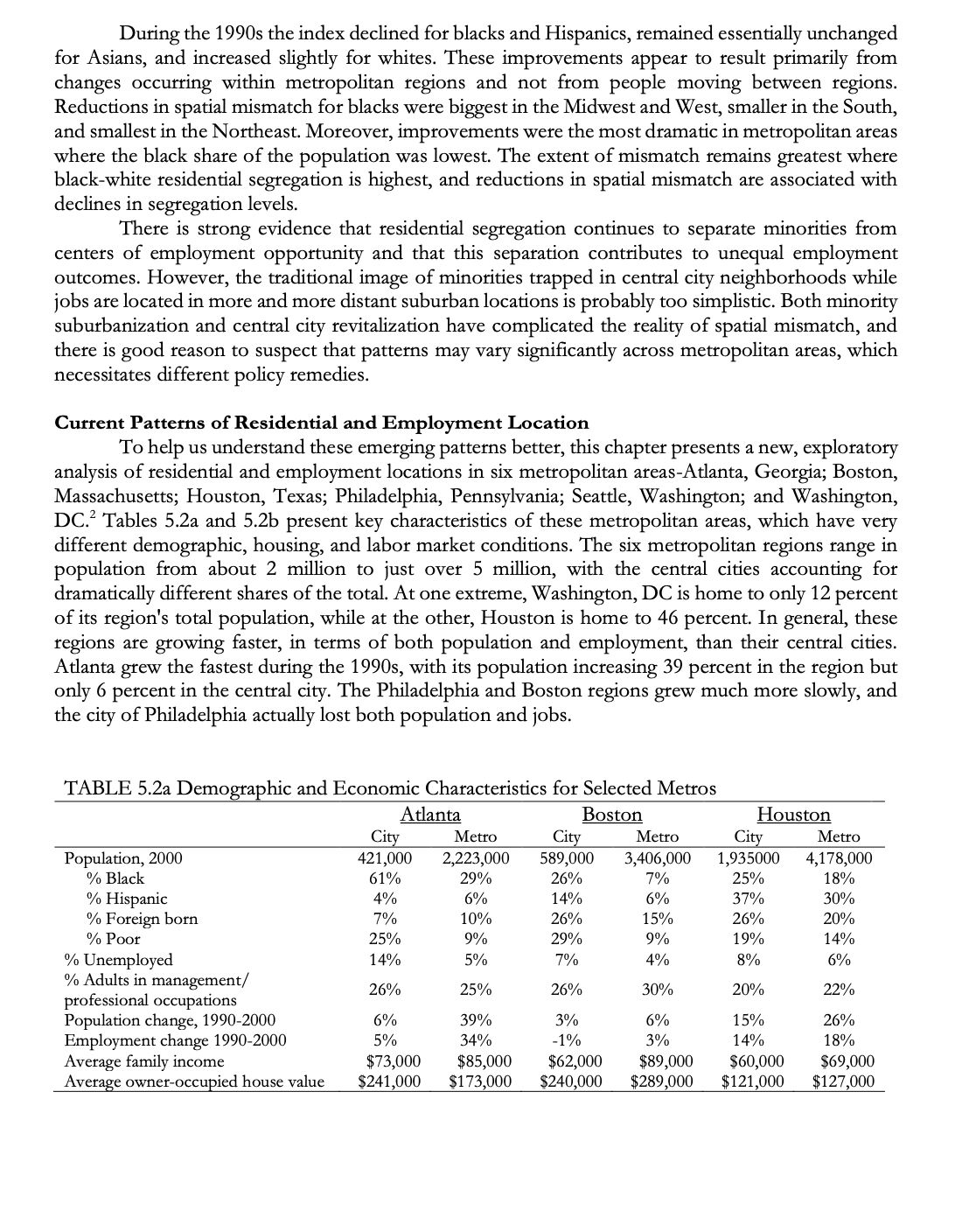
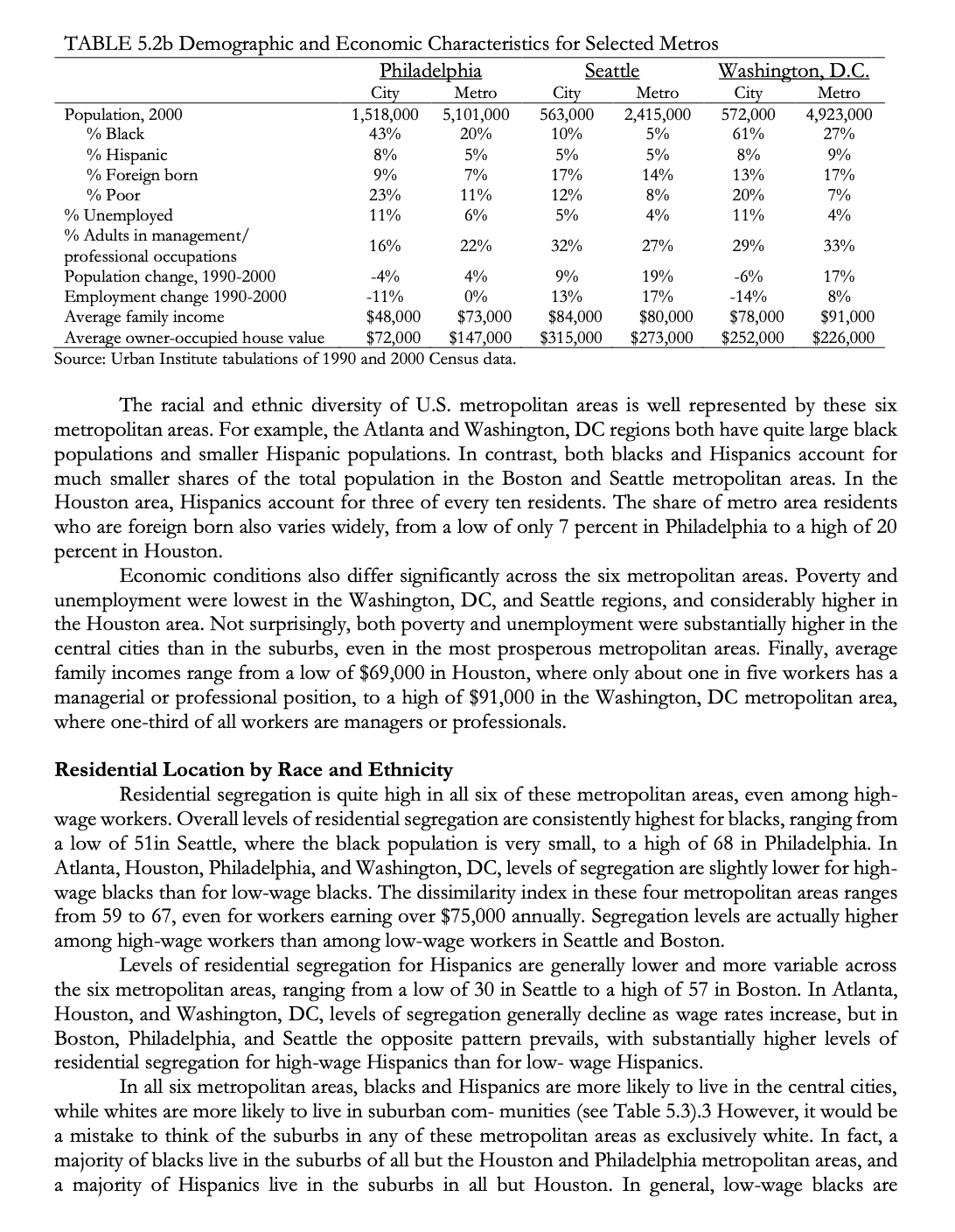
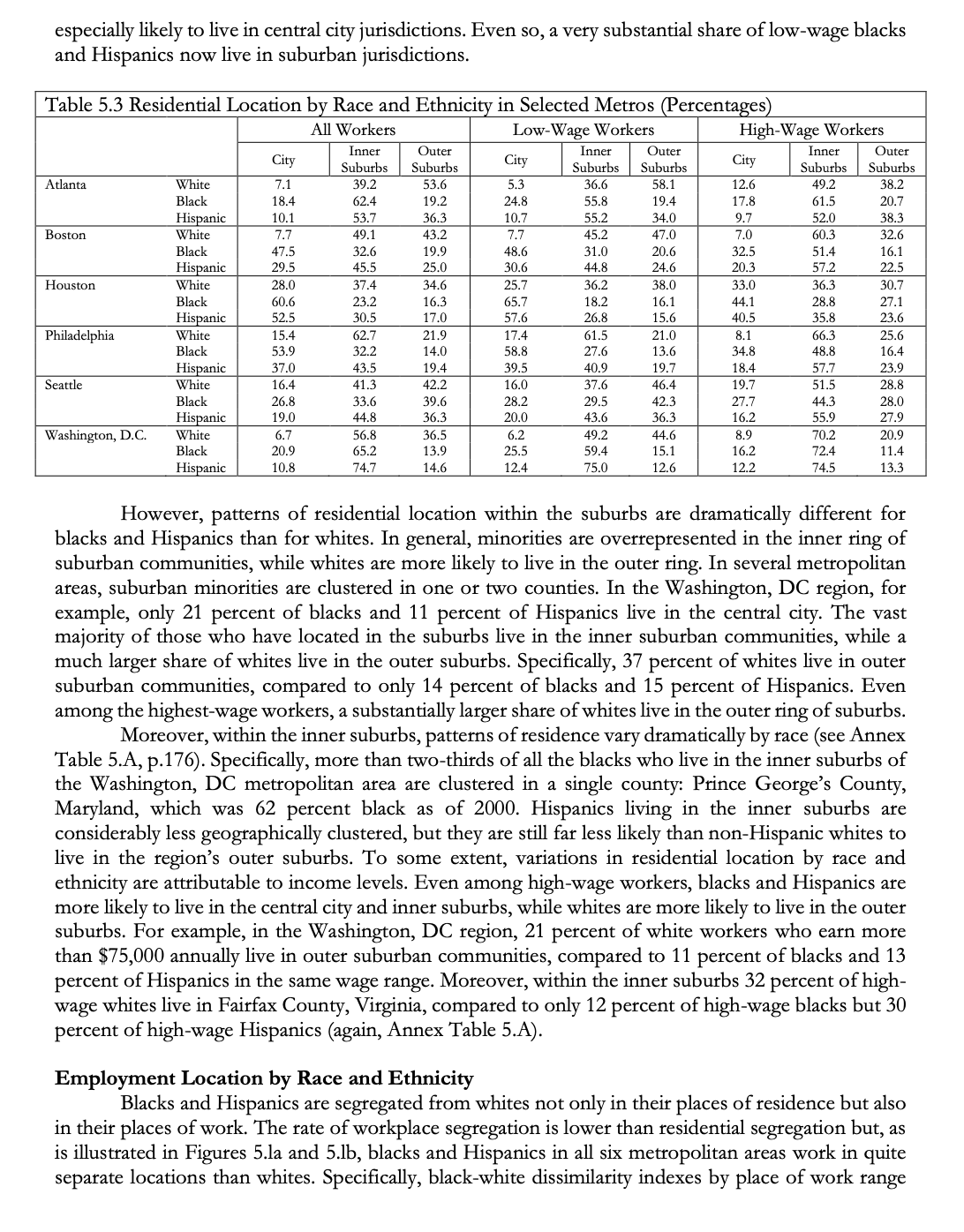
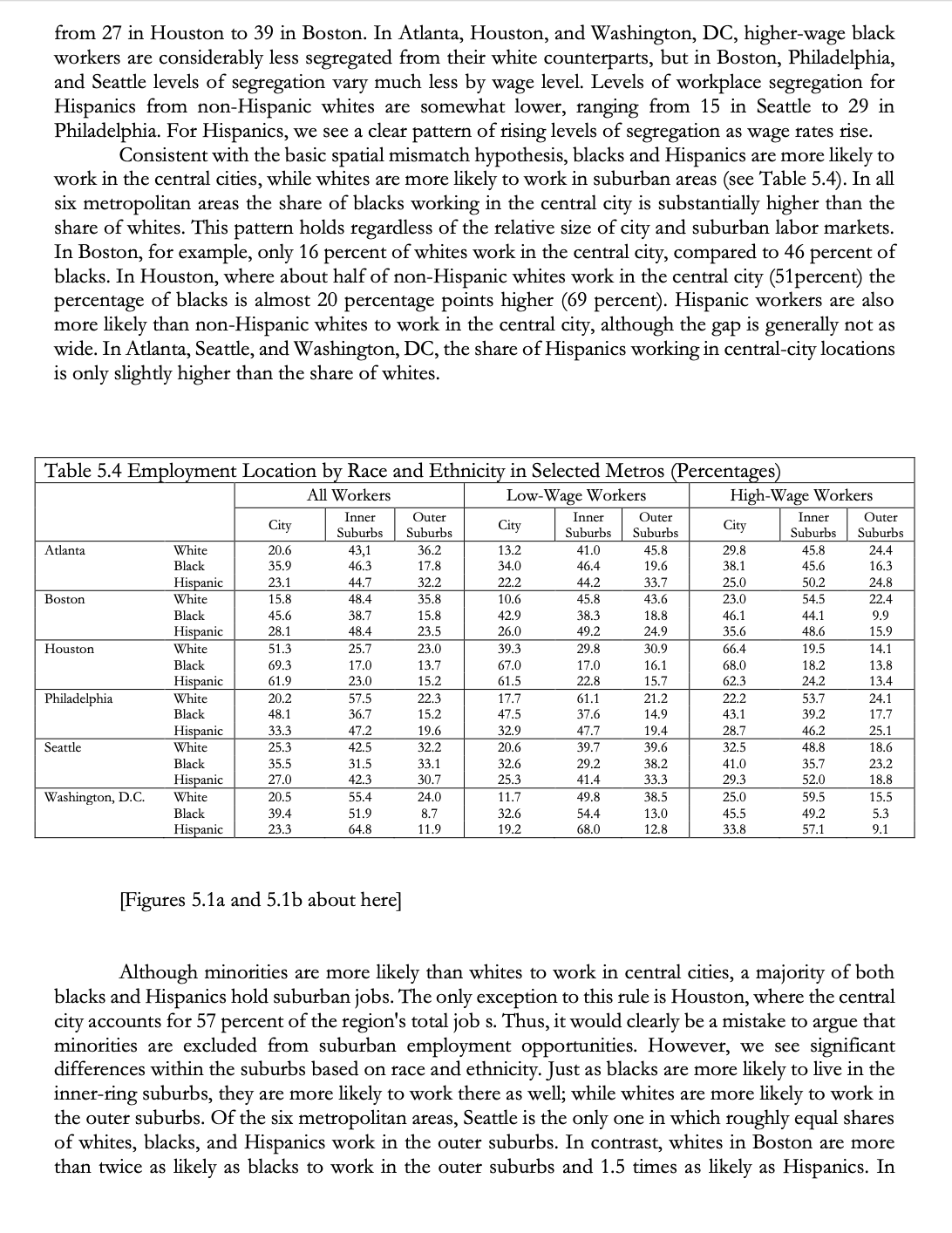
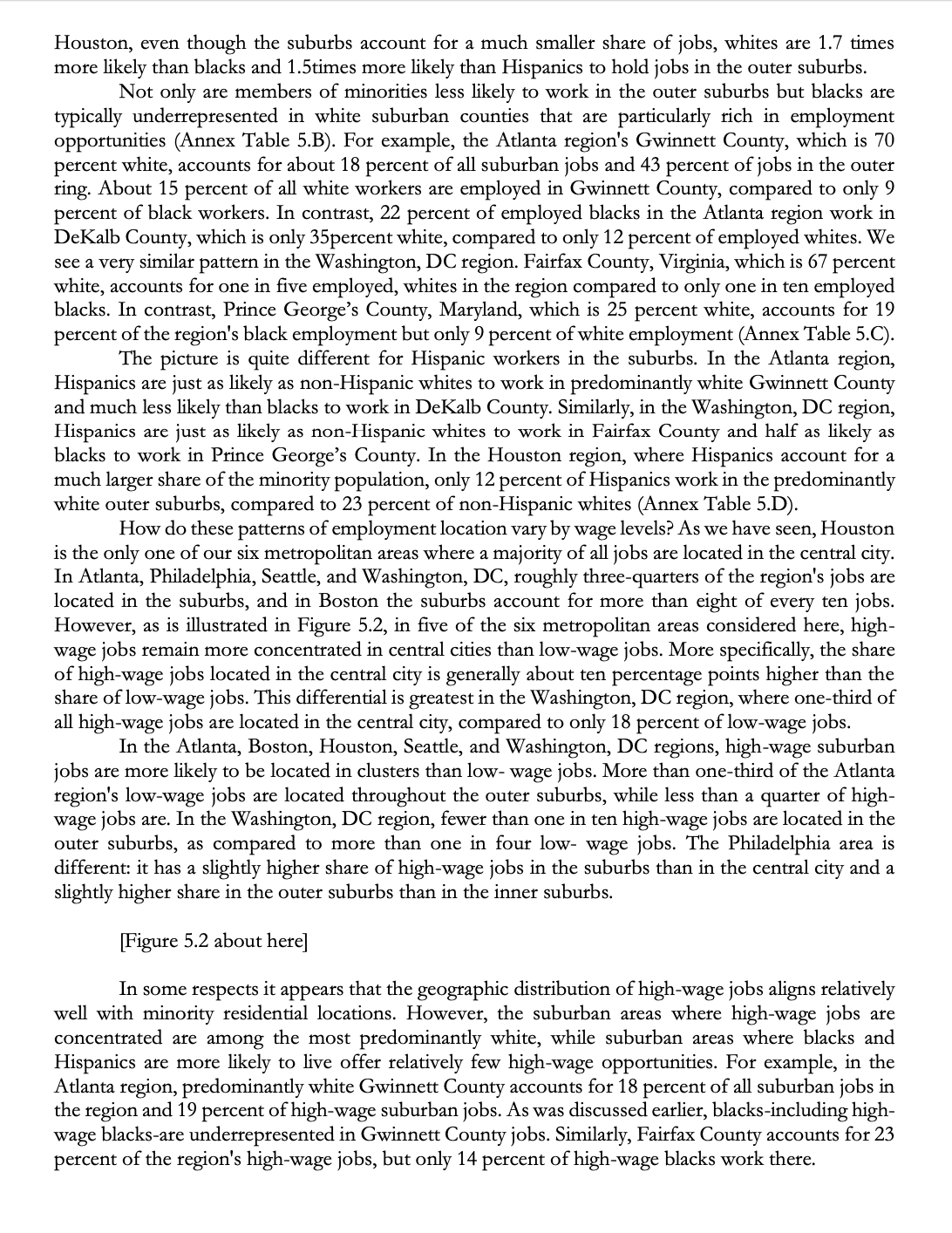
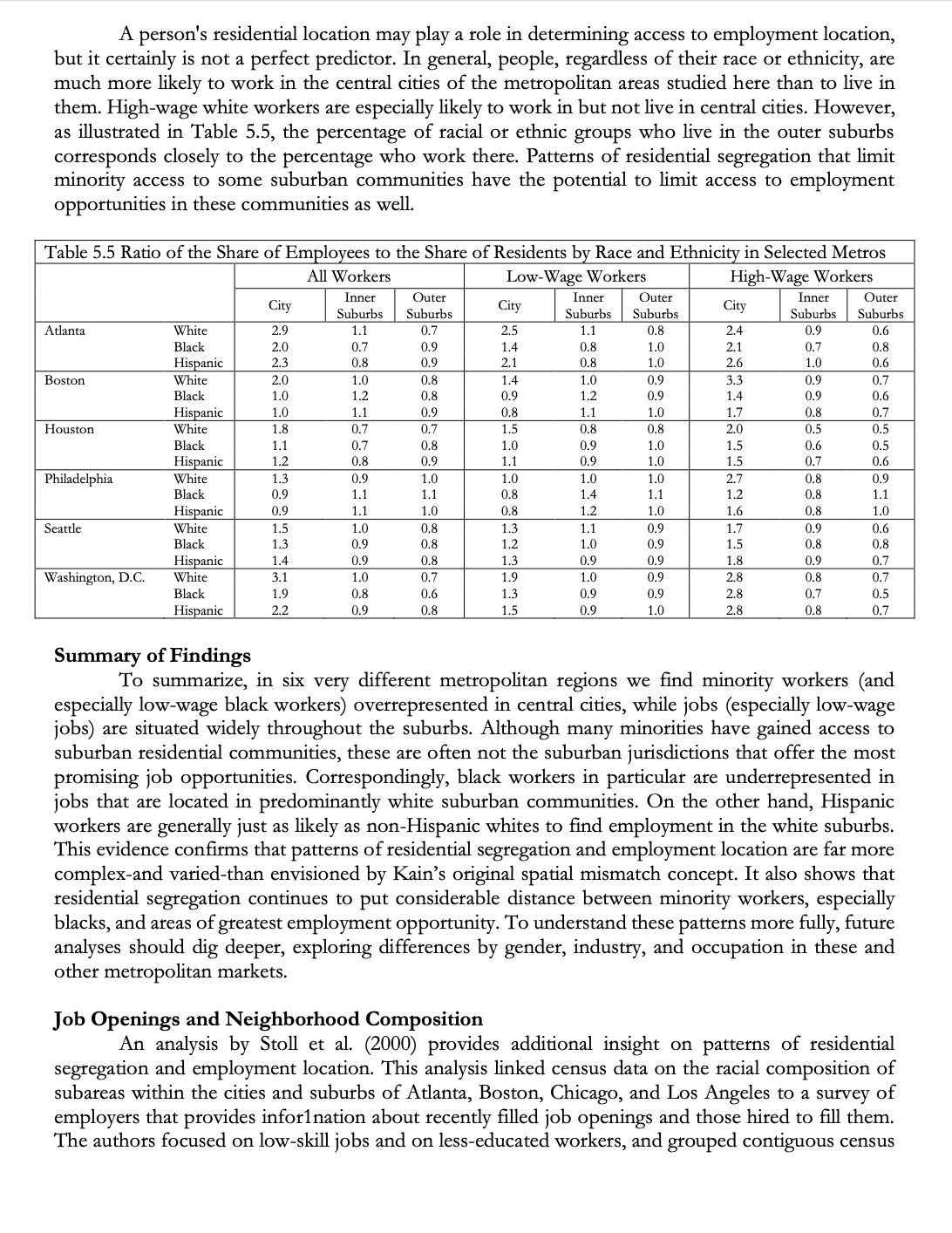
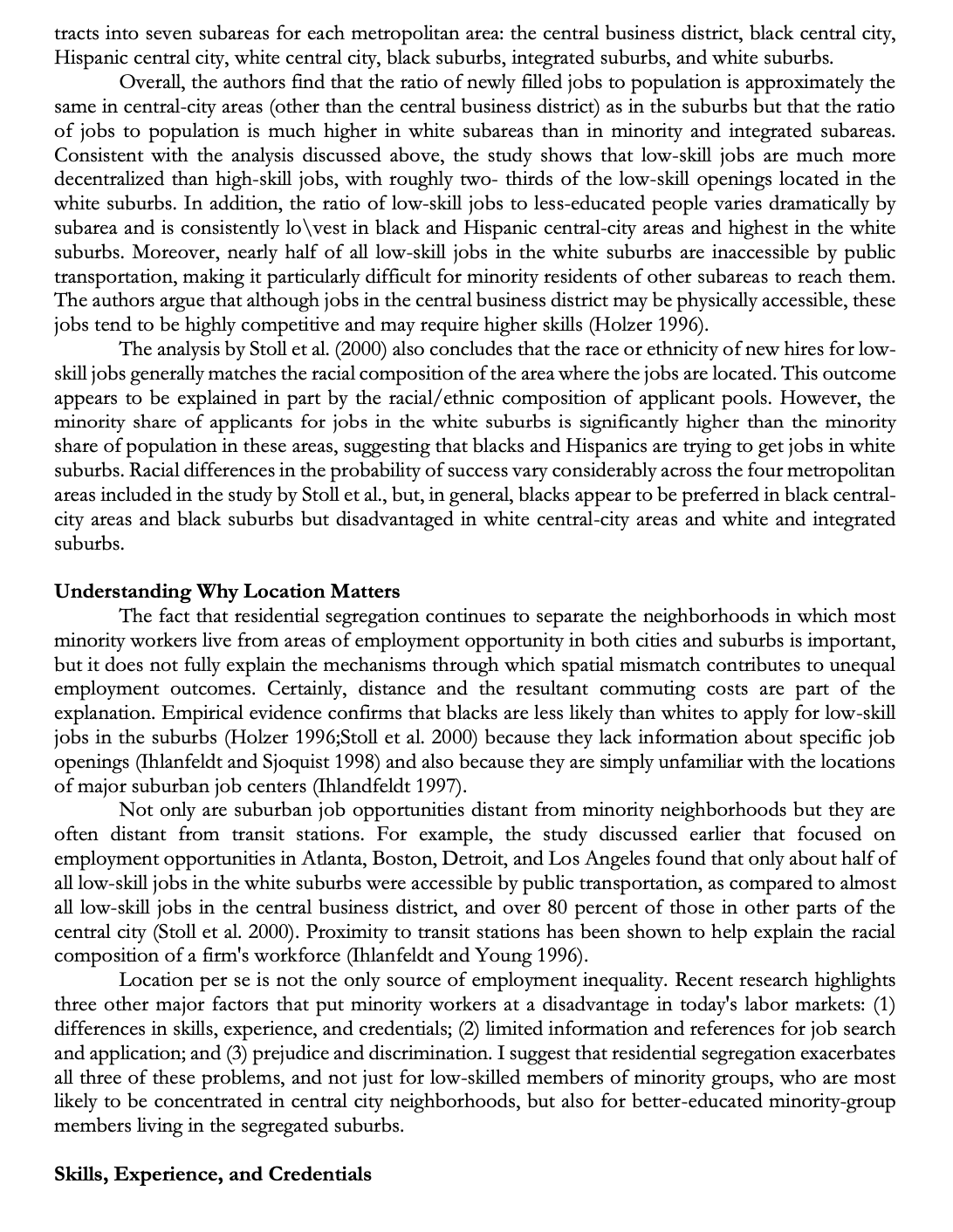
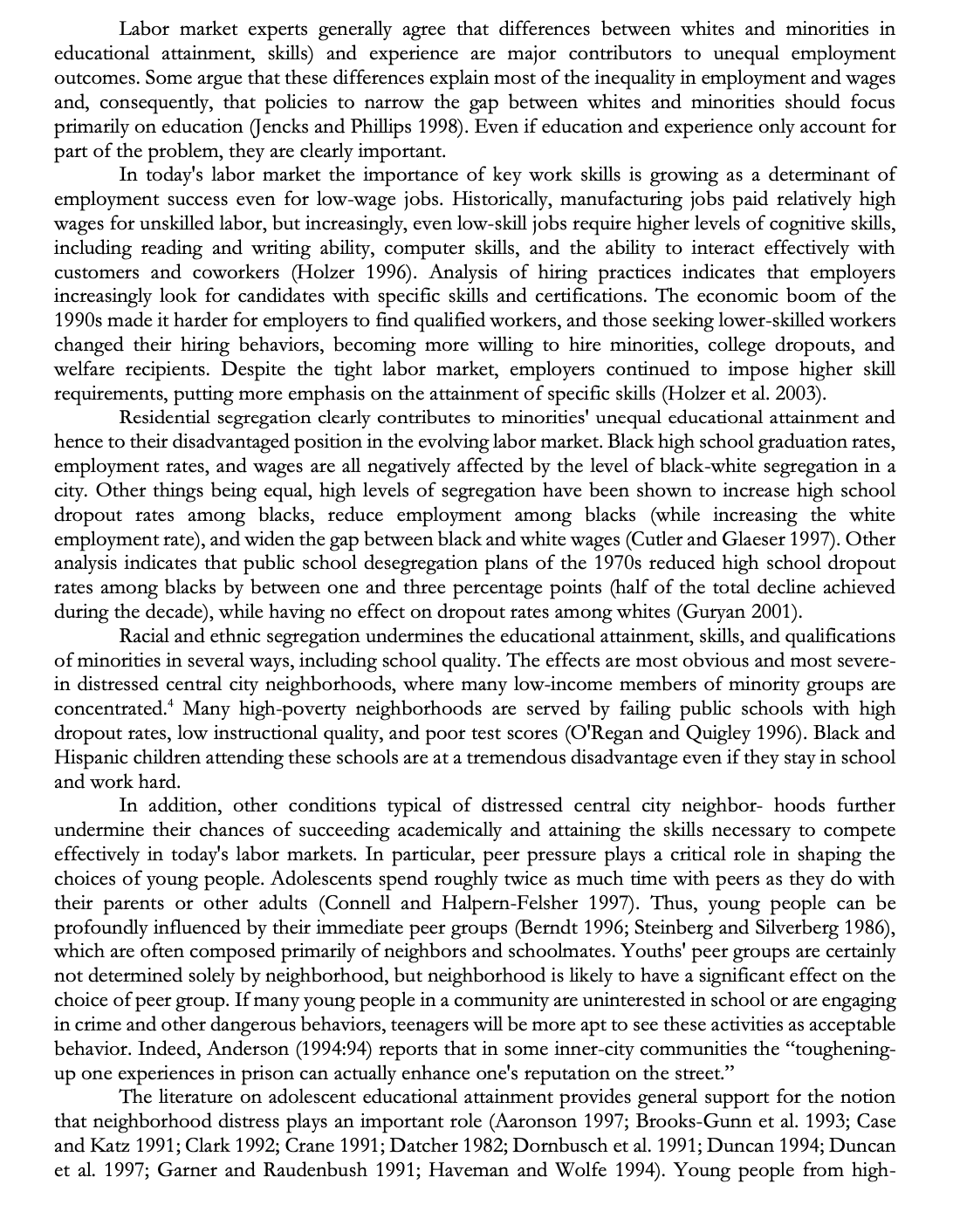
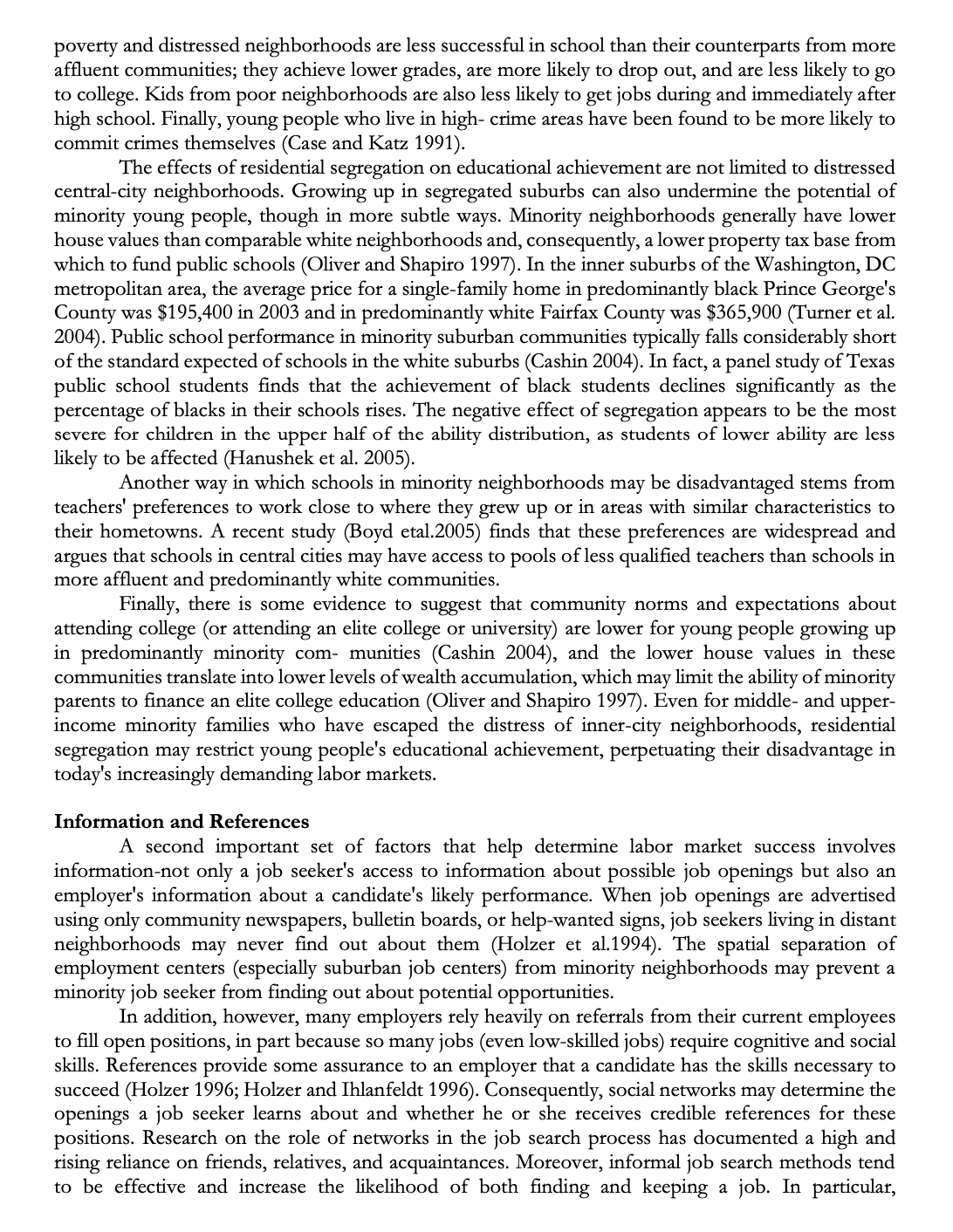
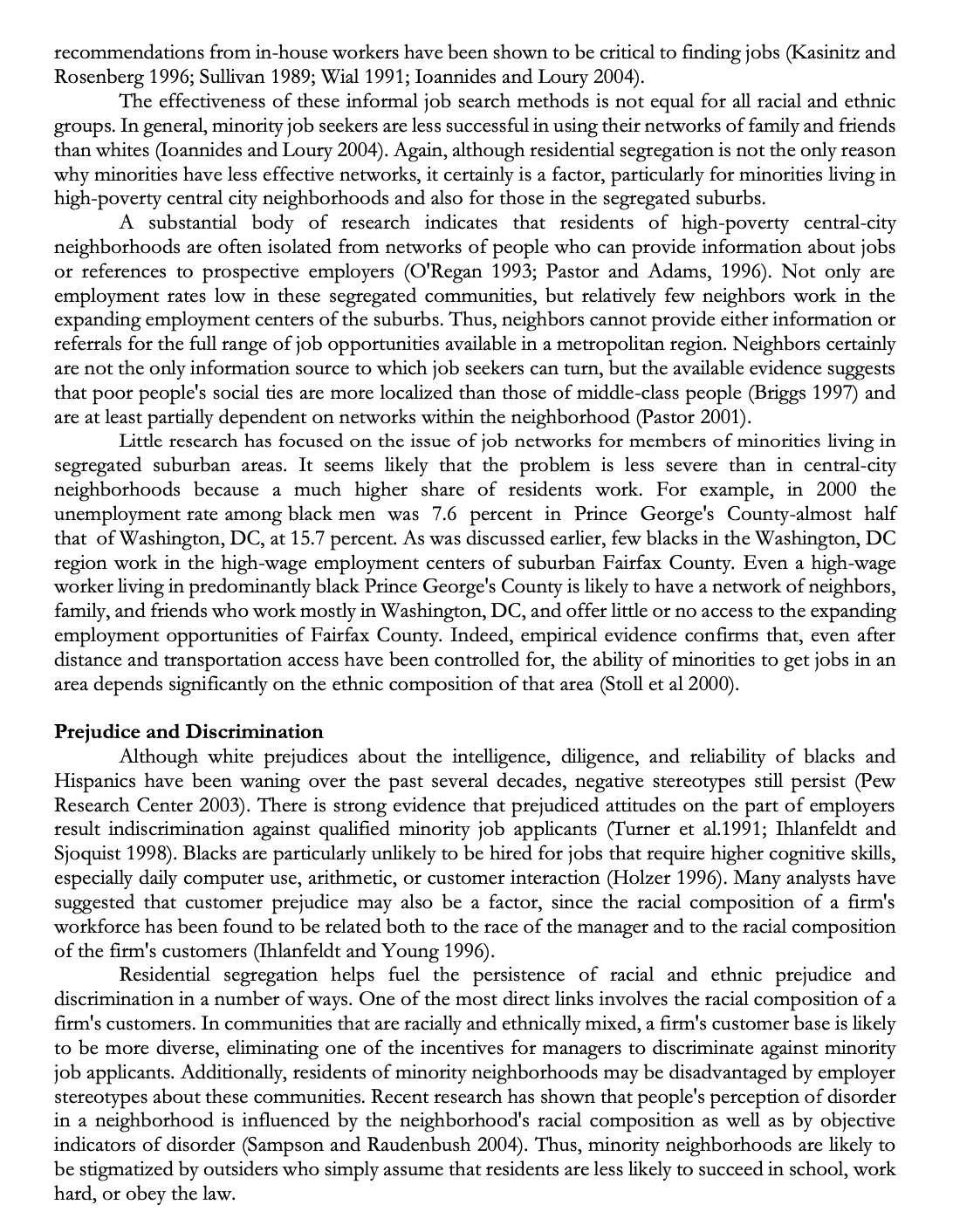
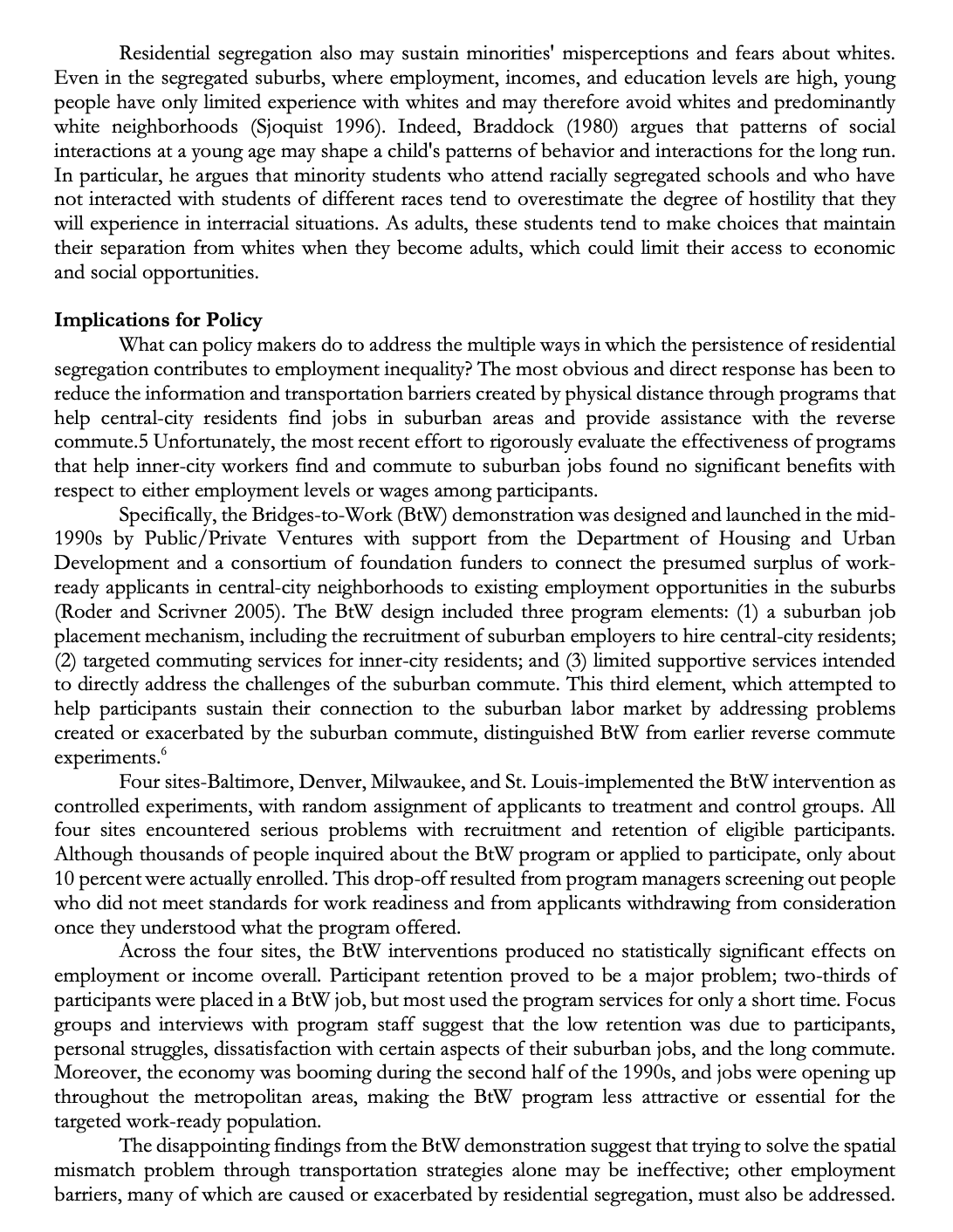
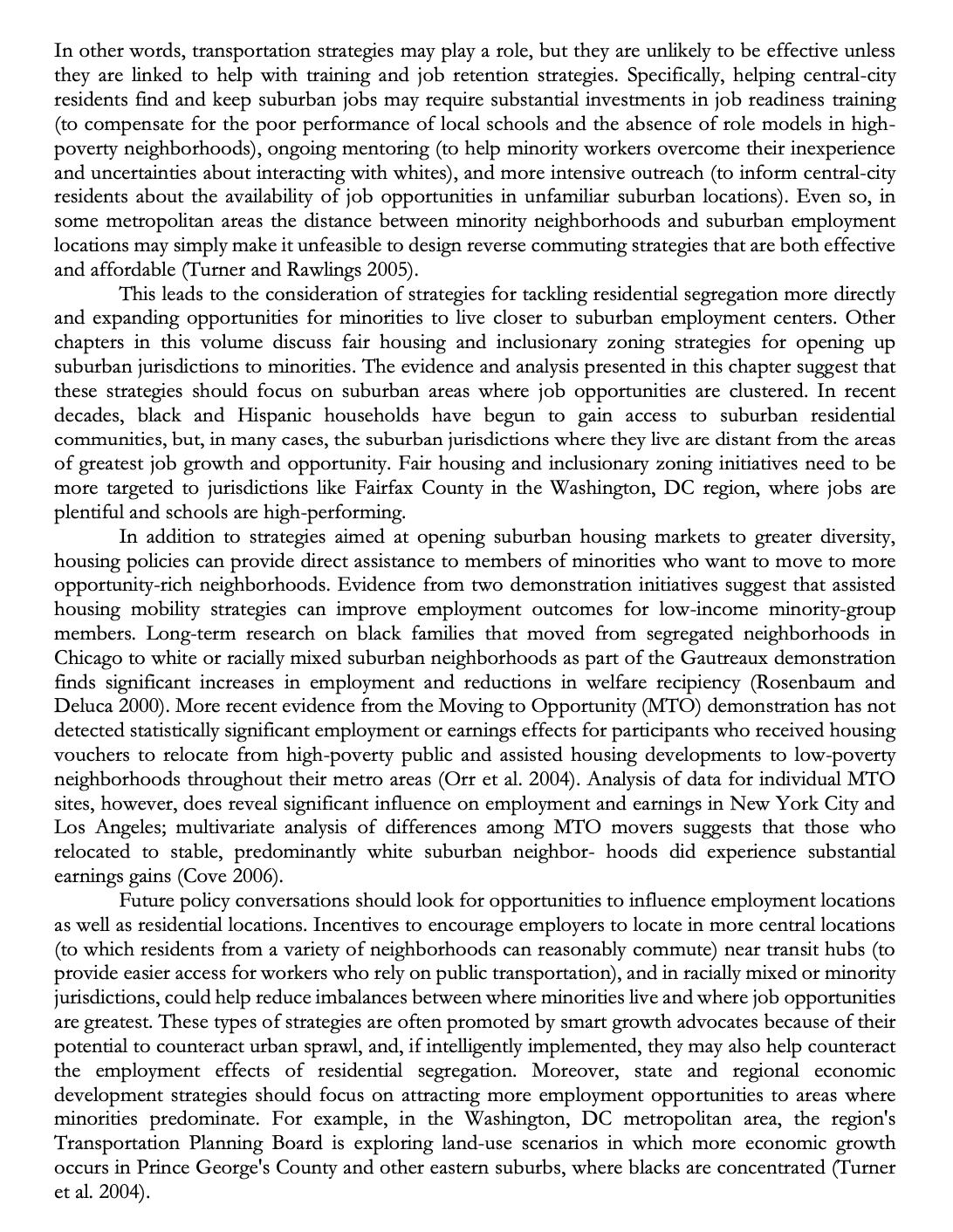
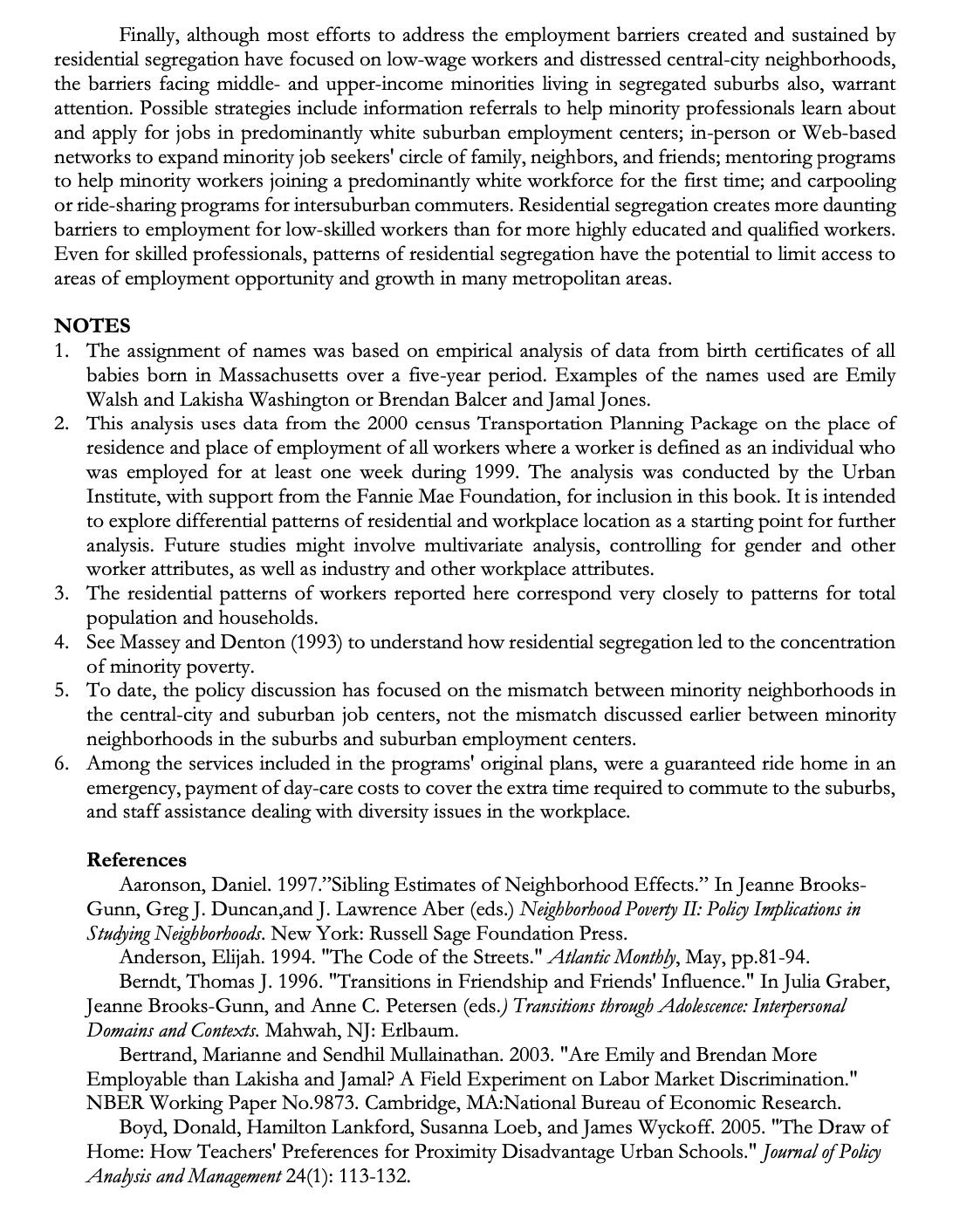
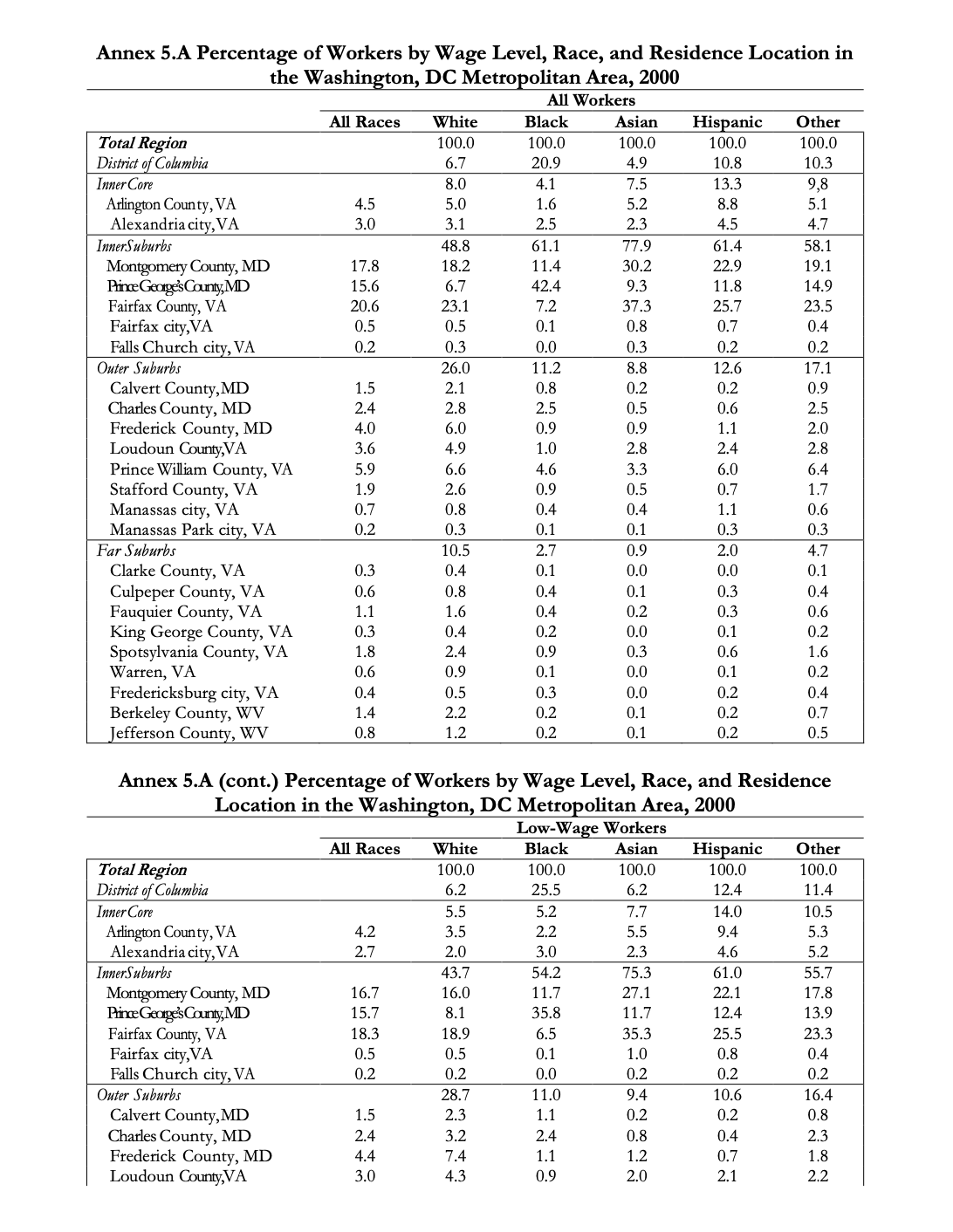
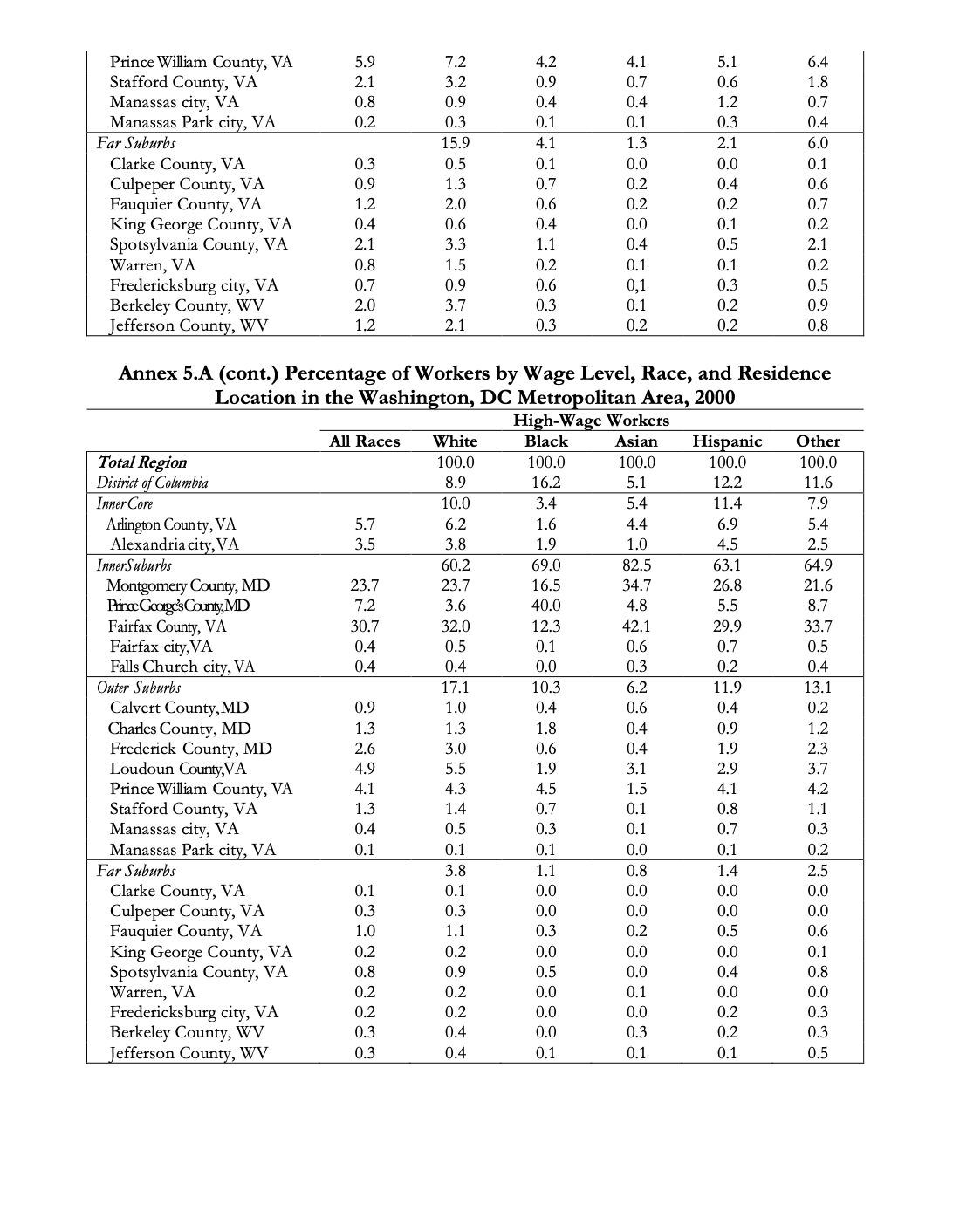
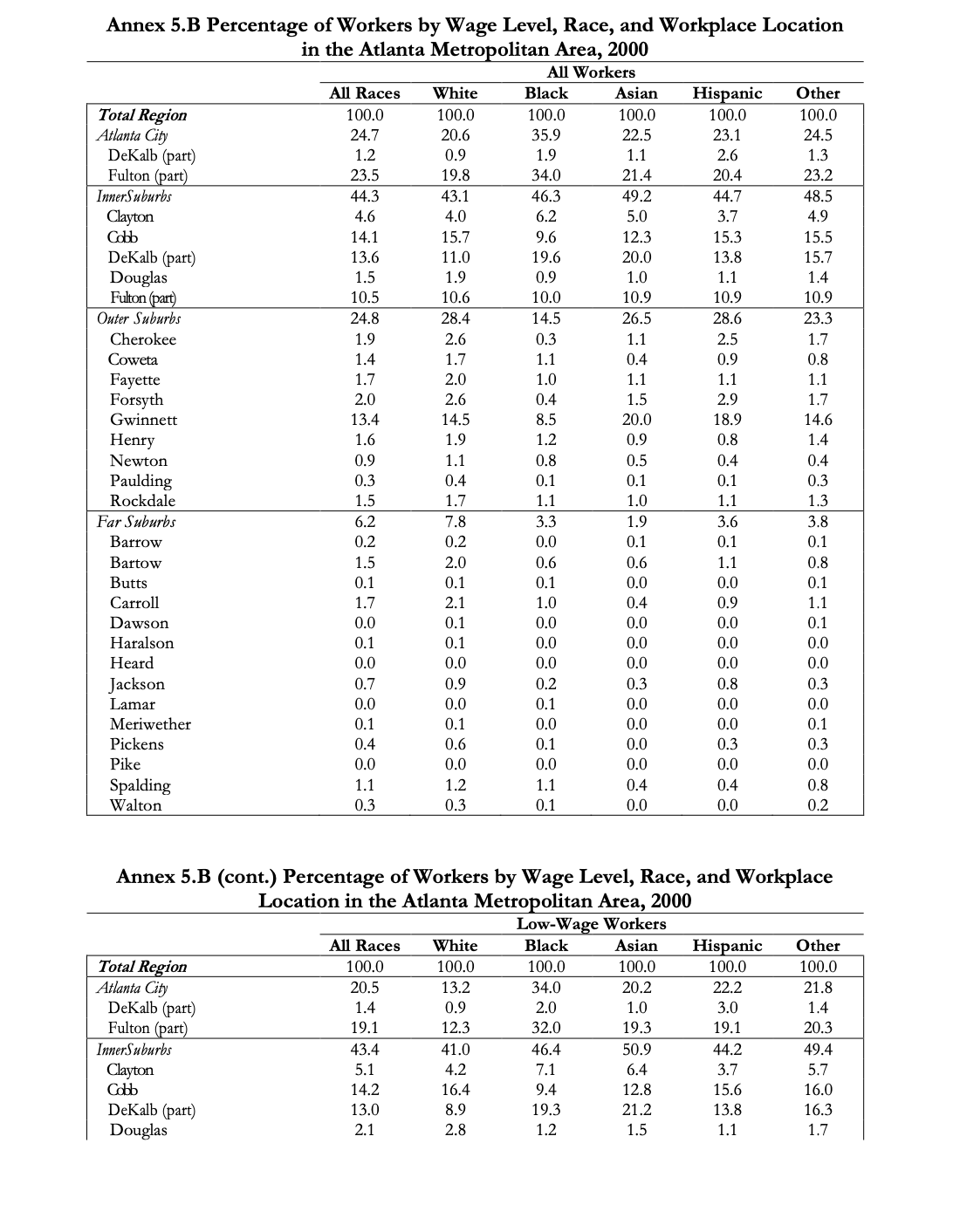

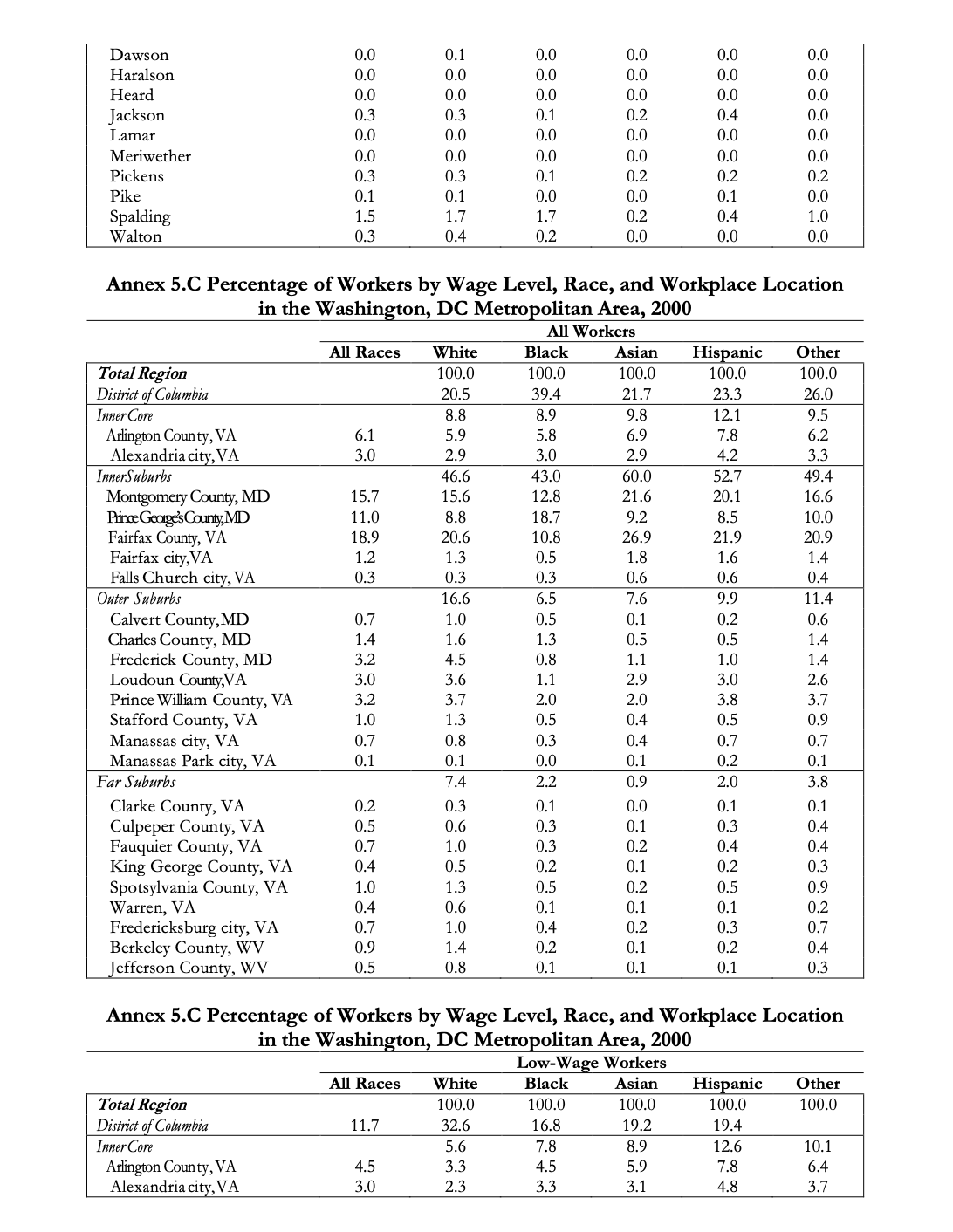
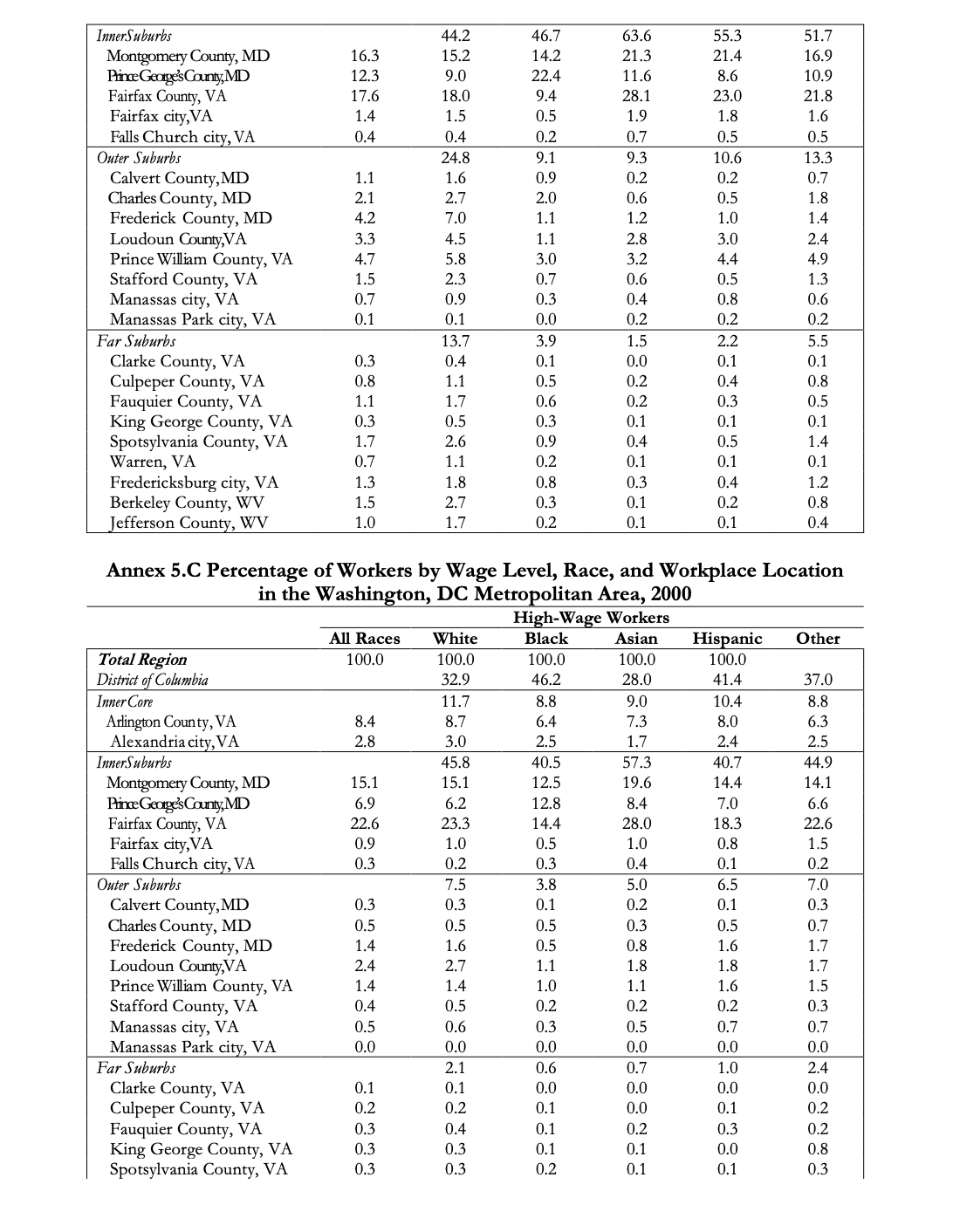
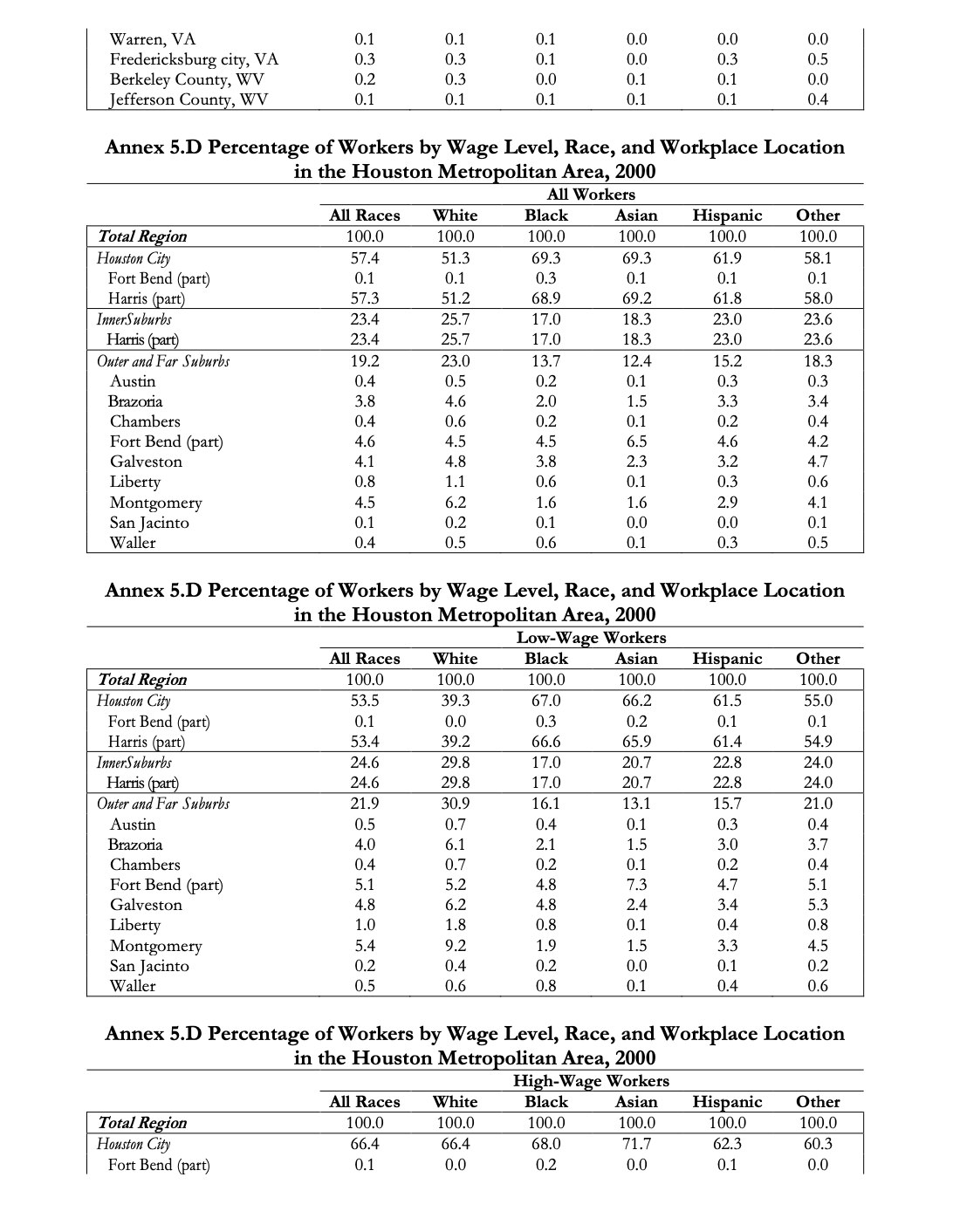
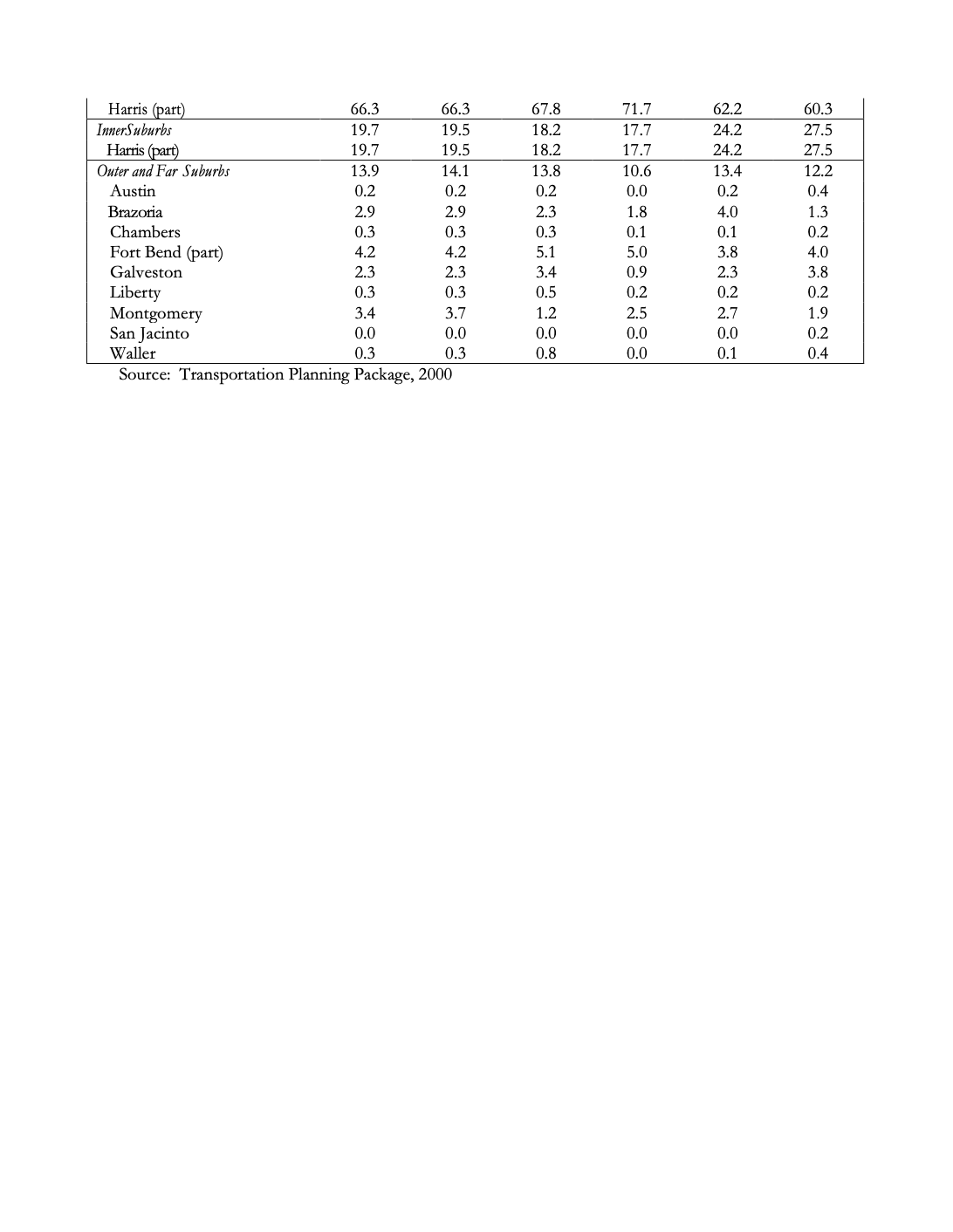
Despite substantial gains during much of the past half-century, employment outcomes for blacks and Hispanics still fall short of outcomes for whites. Blacks and Hispanics are less likely to have jobs and) if they are employed, earn lower wages on average. Differences between minorities and whites in education, skills, and experience explain part of the gap in employment outcomes but not all of it. Even after education and achievement have been controlled for, blacks and Hispanics-particularly men-do not enjoy as much success in the labor market as whites. This chapter reviews current theory and evidence on the contribution of residential segregation to persistent inequality in employment outcomes and presents new exploratory analysis of 2000 census data on the isolation of minority neighborhoods from centers of employment opportunity. CHAPTER 5 Residential Segregation and Employment Inequality Margery Austin Turner Persistence of Employment Inequality During the 1960s and 1970s, disparities between minorities and whites narrowed significantly, suggesting that the nation was making real progress toward more equitable employment opportunities. However, during the 1980s the gap between minorities and whites in both employment and wages widened again because of economic restructuring, the loss of manufacturing jobs, and the relative decline in wages for low-skill jobs (Smith 2001; Holzer 2001; Conrad 2001). The prosperity of the 1990s brought increases in employment for virtually all segments of the U.S. population, and the wage gap between white and minority men narrowed. However, the gap in employment rates between white and minority men continued to widen during the 1990s. For women, the opposite pattern prevailed during the past decade, with differences in employment narrowing while differences in wages narrowed. This pattern is probably attributable to the increase in employment among low-skilled women because of welfare reform (Holzer et al 2004). Thus, near the start of the twenty-first century, blacks and Hispanics are still at a substantial disadvantage relative to whites. As is illustrated in Table 5.1, the share of all blacks who are working (the employment to population ratio) falls substantially below that of either whites or Hispanics. The share of people who are actively seeking work but unable to find it (the unemployment rate) is roughly twice as high for blacks as for whites, and almost 50 percent higher for Hispanics than for non- Hispanic whites. Considerable research has focused on identifying the causes of these racial and ethnic disparities in employment and wages. Clearly, differences between minorities and whites in education and experience-differences that stem in part from past discrimination-provide part of the explanation. However, these factors explain the wage gap more than the gap in employment rates and the gap between white and minority women more than between white and minority men (Smith 2001; Holzer 2001; Conrad 2001). Table 5.1 Current Disparities in Employment by Race and Ethnicity (percentages) Ratio of employment to population Whites Blacks 2001 2002 2003 2004 63.7 66.5 66.4 63.2 58.5 57.6 56.9 57.0 64.3 63.4 63.0 63.9 Hispanics Unemployment rate Whites Blacks Hispanics Source: Seasonally adjusted fourth-quarter estimates from the Current Population Survey 4.9 9.8 7.4 5.1 5.1 4.6 10.6 10.6 10.8 7.9 7.1 6.7 Outright discrimination against minorities in the labor market also plays a role. Paired-testing studies find that young black and Hispanic men applying for entry- level jobs are less likely than comparably qualified whites to be invited to apply, interviewed, or offered a position. In addition, they experience significant levels of
Step by Step Solution
There are 3 Steps involved in it
Step: 1
In Residential Segregation and Employment Inequality by Margery Austin Turner the understanding of t...
Get Instant Access to Expert-Tailored Solutions
See step-by-step solutions with expert insights and AI powered tools for academic success
Step: 2

Step: 3

Ace Your Homework with AI
Get the answers you need in no time with our AI-driven, step-by-step assistance
Get Started


